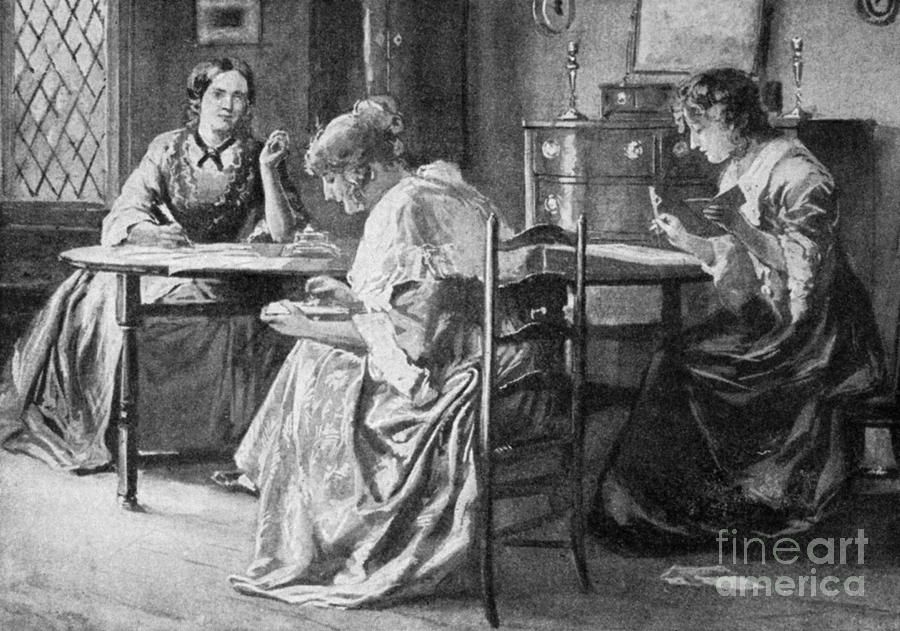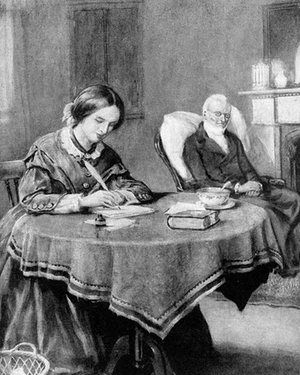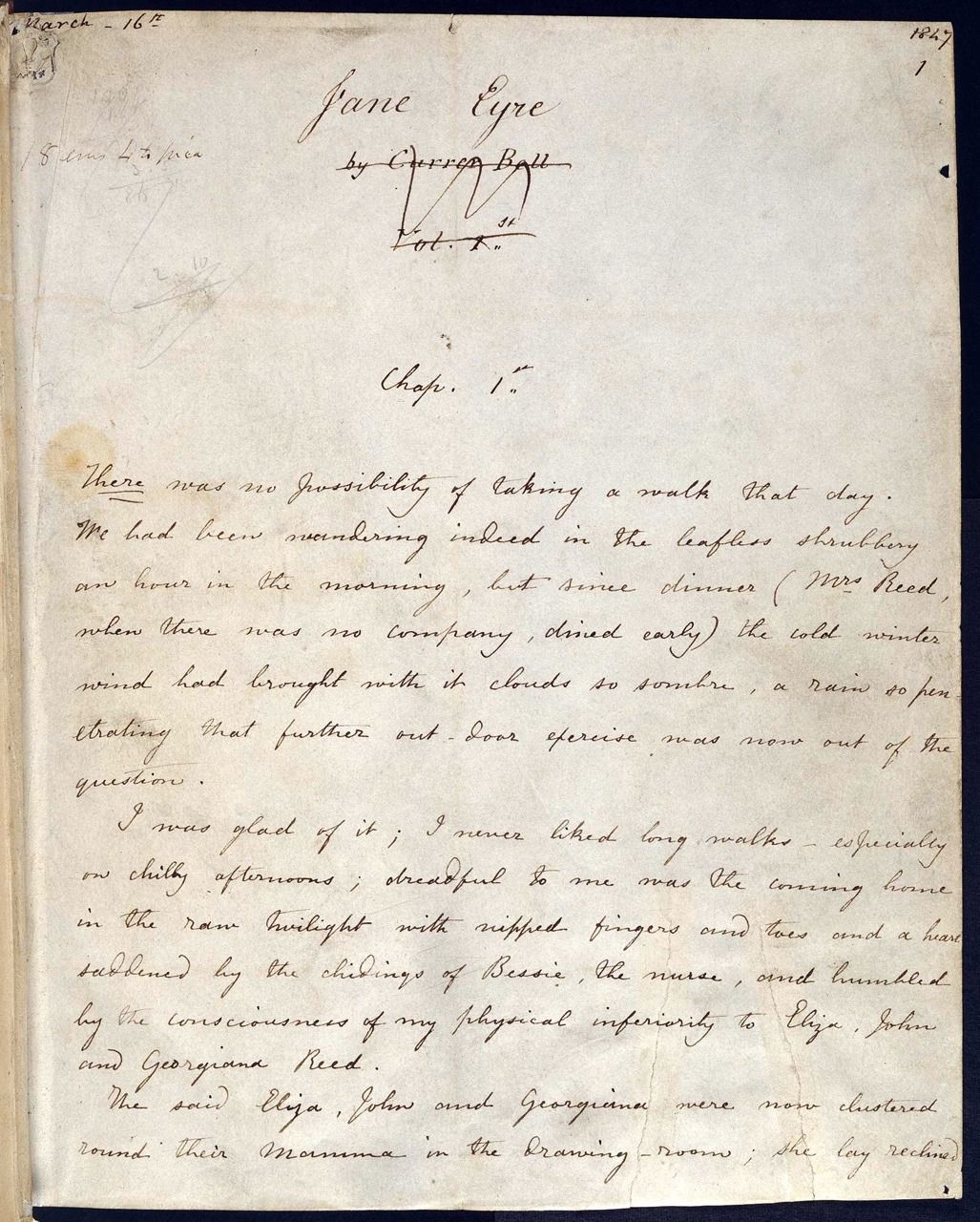Three sisters – Charlotte, Emily and Anne from a middle-class English family changed the course of literary history in the 19th century. Let us delve into the lives of the Bronte sister and discover more about Charlotte’s work of art and life on the occasion of Charlotte’s birth anniversary.
I remember reading my written-during-victorian-era-book, Jane Eyre, when I was in school. I was utterly smitten with her style of writing. After that, I was compelled to look up Charlotte Bronte since I always had a habit of looking up the authors of the books I read. And I discovered some fascinating facts about the Victorian novelist.
A Modest Family of Literary Prodigies
It’s unusual to discover a writer in a family, let alone for the entire family to become literary geniuses. The onset of the Brontes’ writing life was outsourced from their tragedies. Around the 1820s, Charlotte and the other Bronte sisters lost their mother to illness when they were just five and three years respectively. Another loss hit the Bronte siblings when they lost their two eldest sisters to tuberculosis. The deceased sisters were survived by Five Brontes: The father, Patrick, an Irish-born priest, the three girls, and a brother younger than Charlotte. The Bronte family was also accompanied by their mother’s sister, Aunt Branwell.
The family lived in the parsonage in a small town called Haworth, Yorkshire. In its grim situation between a graveyard and the great expanse of the moors, the humble grey-stone cottage became a familiar space with which the sisters always felt a painful connection. The mourning siblings developed a deep bond. “Because their interests were so similar and they were all so pathologically shy, the sisters were quite close. Emily and Anne were exactly like twins “, Juliet Barker, the author of The Brontes, states. “The eldest, Charlotte, tended to try to take care of them.” Branwell started recording their adventures – filling small books with remotely legible handwriting – Other siblings soon followed suit. Eventually, this period of adventure documentation progressed, and they began to write stories. Charlotte and Branwell curated a make-believe land called Angria together, whilst Anne and Emily built Gondal. These fantasy worlds became crucial to the Bronte Siblings – not only as a source to improve their writing skills but also as a refuge to escape from reality.
Interest in Writing and Reading
Unlike most middle-class Victorian homes, the Bronte parsonage was not as strictly restricted from reading. Apart from the compulsory reading of the Bible, Patrick Bronte also encouraged the children to indulge in other literary reads like Virgil, Bunyan, Shakespeare, Pope, Johnson, Gibbon, Cowper, Burns, Scott, Wordsworth, Coleridge, Milton, Southey, and Byron. In addition, he fetched books for the kids from the Keighley Mechanics Institute Library and various other books from contemporary local libraries.
Charlotte Bronte devoured local newspapers and, most notably, the Tory-oriented Blackwood’s Edinburgh Magazine – the most popular periodical of her times. Such early reading mingled with more traditional childhood favourites like Aesop’s Fables, Arabian Nights, and Gulliver’s Travel contributed to Charlotte Bronte’s distinctive connection with writing.
Charlotte Bronte’s books
Charlotte worked as a governess and taught at a boarding school in Brussels as an adult, and her unrequited love for the school’s headmaster inspired her novels Villette (1853) and The Professor (1855). (published posthumously in 1857). Jane Eyre (1847) became famous due to her passionate and rebellious nature. When she visited London, she was embraced by Mrs Gaskell and Thackeray, who remembered ‘the tiny trembling frame, the little hand, the large honest eyes.’ Charlotte’s participation in both women’s rights and radical workers’ movements was evident in Shirley (1849), which she wrote during and after the tragic deaths of her three siblings in a single year.
The journey to Jane Ayre
Although Bronte’s academic phase was not as smooth, their literary pursuits blossomed. The fictional world that consisted of stories, poems, and plays that the siblings indulged in during their childhood inspired the Bronte sisters to pursue their careers as novelists. Charlotte Bronte was the first amongst all the siblings to suggest Emily and Anne write with pseudonyms Currer, Ellis and Acton Bell. They wrote a poem named ‘Hope.’ published in 1846.
An excerpt from the Poem
” Even as selfish-hearted men.
She was cruel in her fear;
Through the bars, one dreary day,
I looked out to see her there,
And she turned her face away!
Like a false guard, false watchkeeping,
Still, in strife, she whispered peace;
She would sing while I was weeping;”
After the poem received wide recognition and applause from the public, the sisters decided to work on their individual novels under the same pseudonyms. Anne and Emily successfully produced their masterpieces around 1847, but for Charlotte Bronte, it became challenging to find a willing publisher for her first book, ” The Professor” ever. Later that year, Charlotte wrote Jane Eyre. The novel, which deals with Victorian-era gender and social class prejudices, became one of the most critically and wildly successful books.
Jane Eyre: An Autobiography, ‘edited by Currer Bell,’ garnered positive reviews and was published in three volumes on October 19, 1847, becoming one of the year’s best-selling books. There was much speculation about the author’s identity and whether or not it was a woman’s work. For Victorian readers who considered the novel a profound form of moral and social criticism, the story of the abused orphan kid whose sense of injustice and self-worth leads to freedom of the soul via rebellion and containment was inspirational and threatening.
Jane Eyre’s call for equality before God and spiritual affinity in marriage was groundbreaking. However, some critics viewed Jane and Rochester’s relation as inappropriate, and Elizabeth Rigby (later Lady Eastlake) condemned the novel as “pre-eminently an anti-Christian composition” and, if written by a woman, “the work of an immoral one who has long forfeited the society of her own sex.”
Many contemporary readers saw Charlotte Bront’s heroines as ‘unfeminine’ for their independent personalities. Jane Eyre’s genuine individuality and personal acts of defiance against authority and social convention were regarded as vibrant and highly original and dangerously similar to the political turmoil of the moment. The novel was considered subversive by many public morality watchdogs.
Writing Style of Charlotte Bronte
Charlotte Bronte’s writings covered a wide range of topics. First, she used female characters to portray the process of self-discovery. Most importantly, her writings addressed the era’s fundamental taboos, such as sexuality, feminism, religion, societal problems, and reforms, and transferred them via her stories for more women to relate to. Second, Charlotte Bronte’s writing style was descriptive. The keynote of every novel she wrote consisted of various gothic and intense portrayals of love and romance. Third, many of her works, such as Jane Ayre is the example of bildungsroman- a novel on a person’s spiritual education or formative years. Fourth, Charlotte uses idioms and elaborated phrases and sentences that illustrate the significance of her story. She was one of the few writers who was unique in her storytelling style and revolutionary in writing about burning topics and stereotypes in society.
Conclusion
Many women rose from the ashes of their agony like a phoenix through their writings, as time has witnessed numerous creative talents. Unfortunately, most women of the period did not have access to reading materials because it was thought unwomanly to pursue a career in writing. On the other hand, Charlotte was fortunate because her father empowered her to learn and read. As a result, she grew as a writer as she jotted down her stories, making history and becoming a literary legend and an inspiration for many young women. Charlotte was a genius novelist of the first order. Along with her sisters, she changed the course of literary history and showed her stoic disposition through female characters in her novels to the world.
Hit us up in the comment section with some more interesting facts and reads by Charlotte Bronte that you would like to read.



